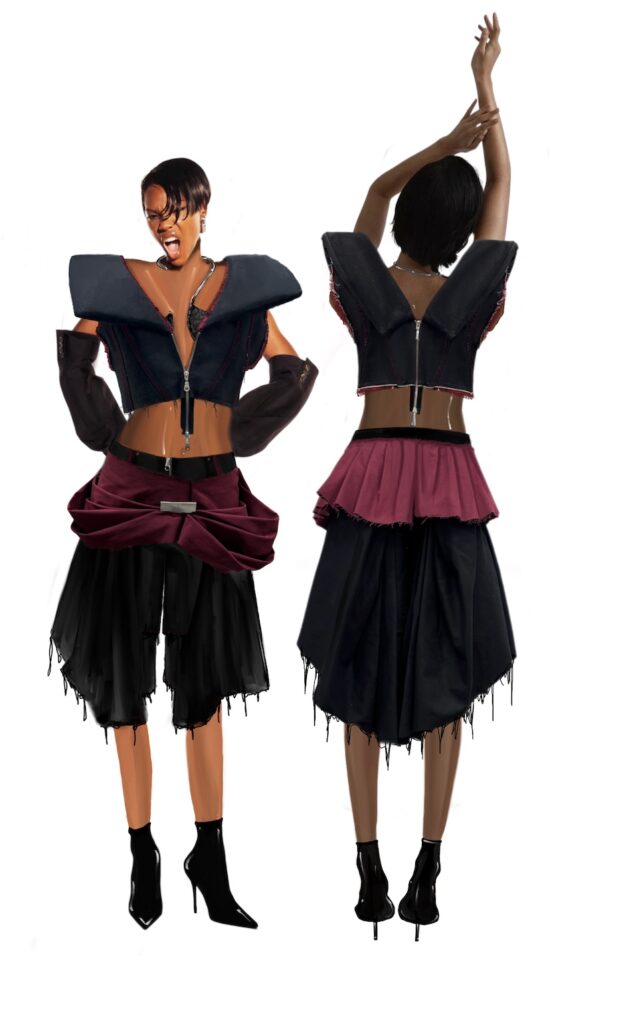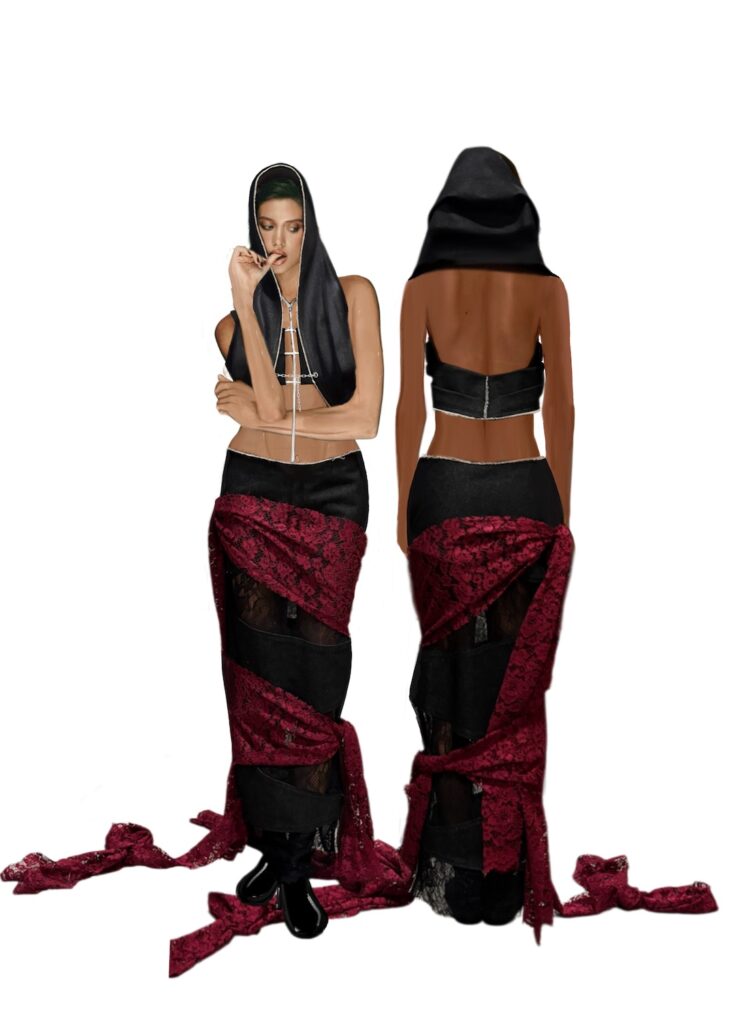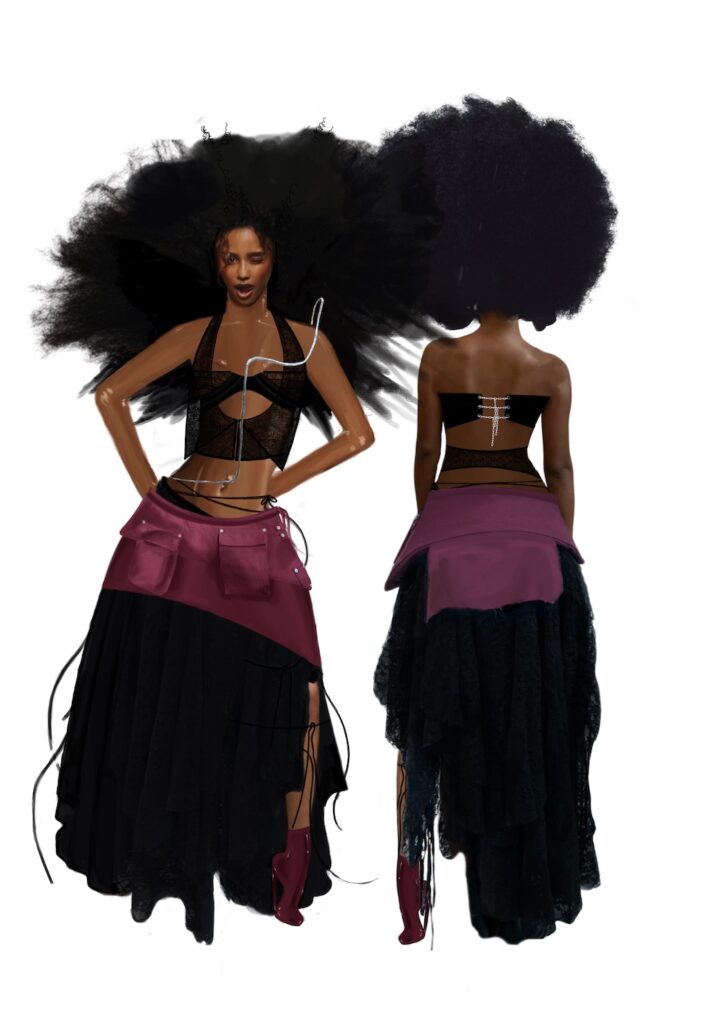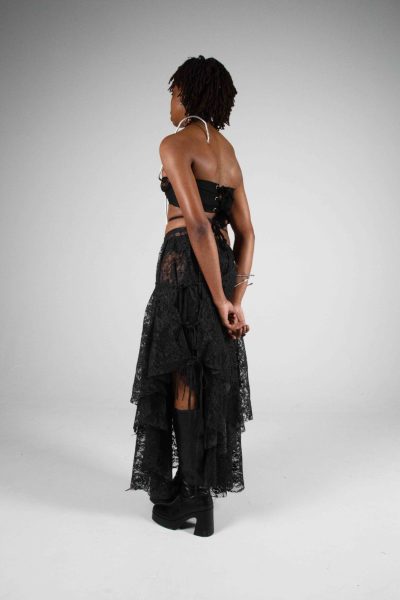
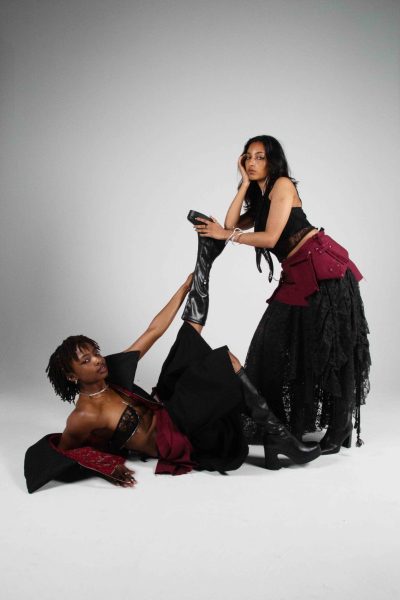
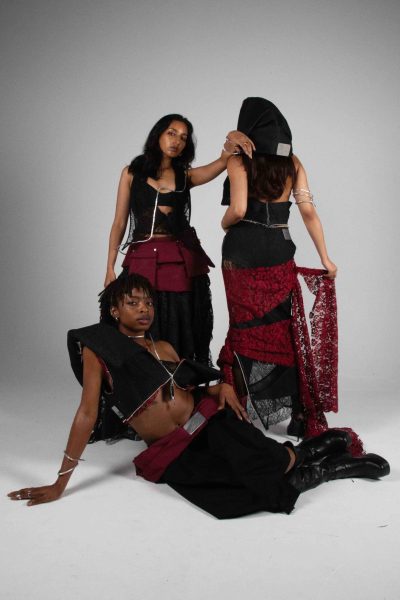
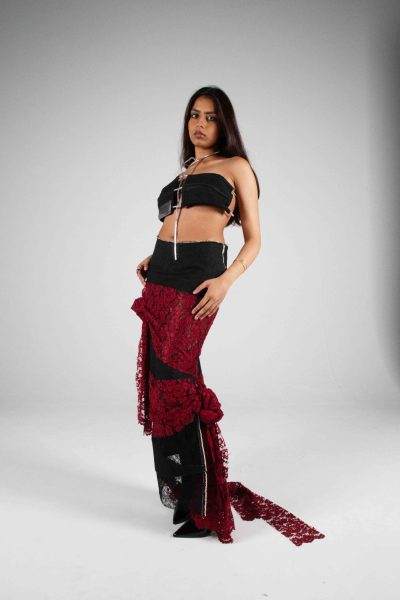
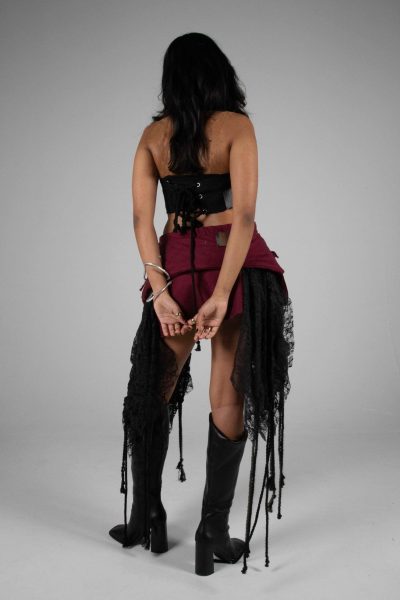
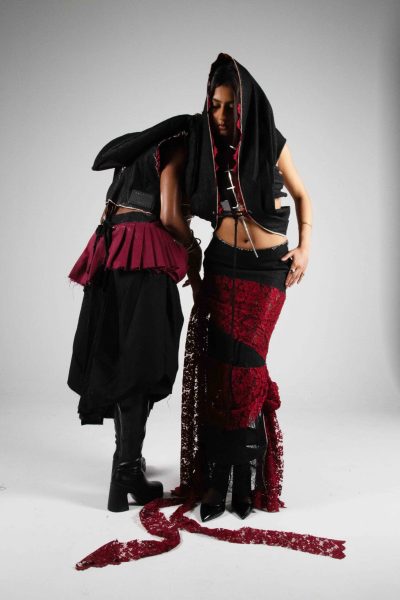
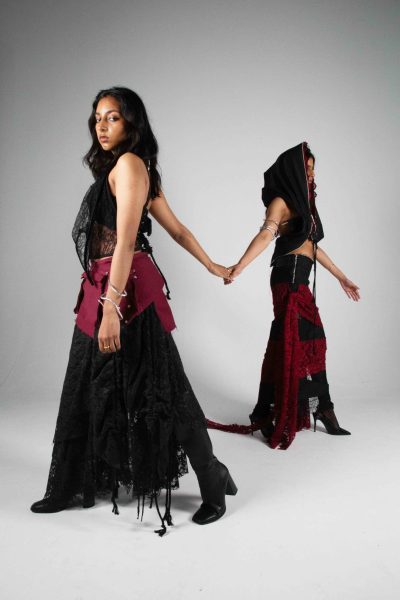
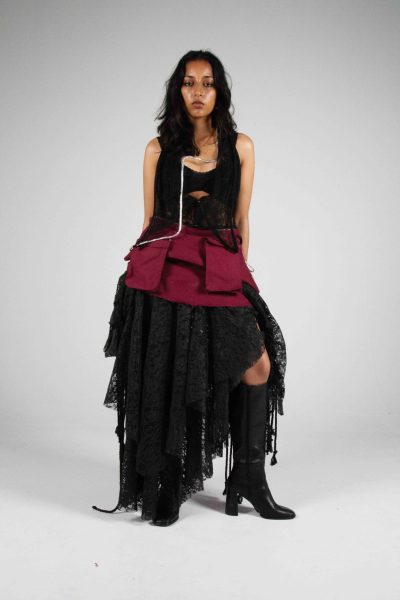
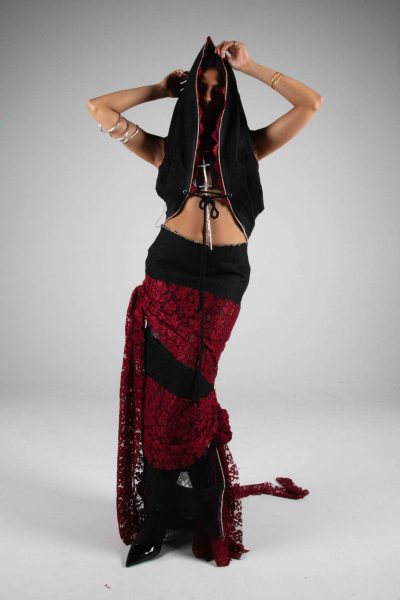
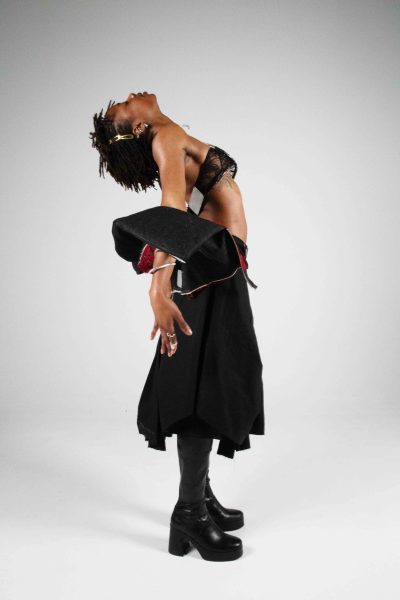
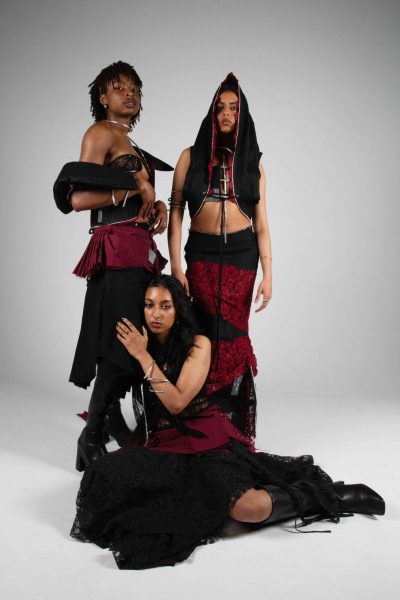
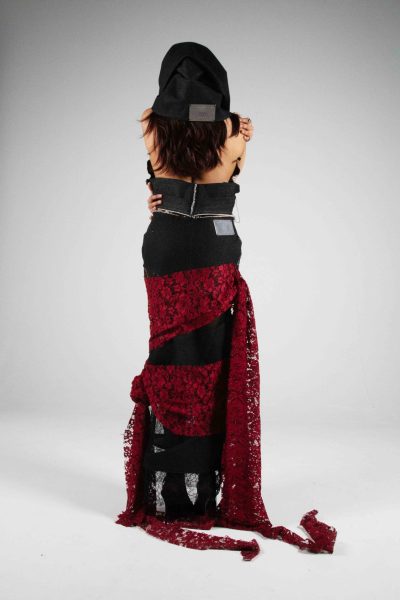
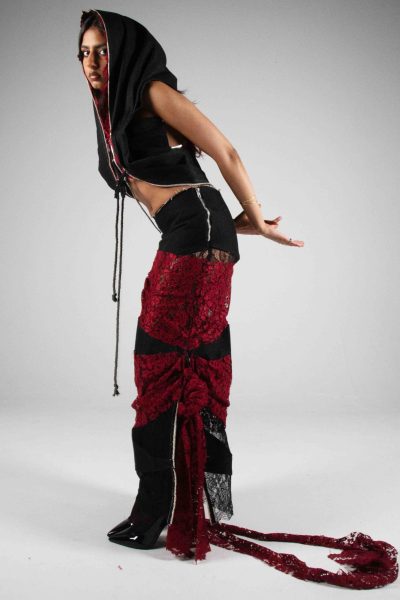
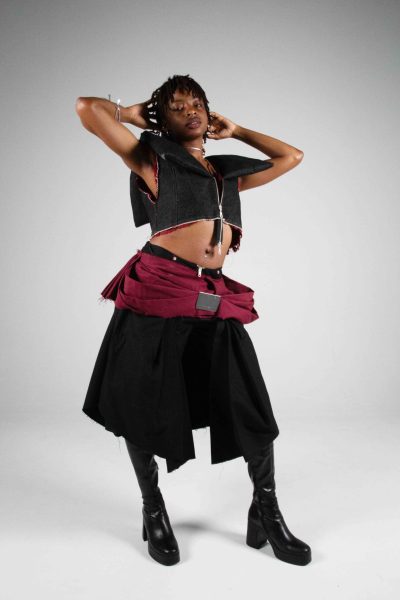
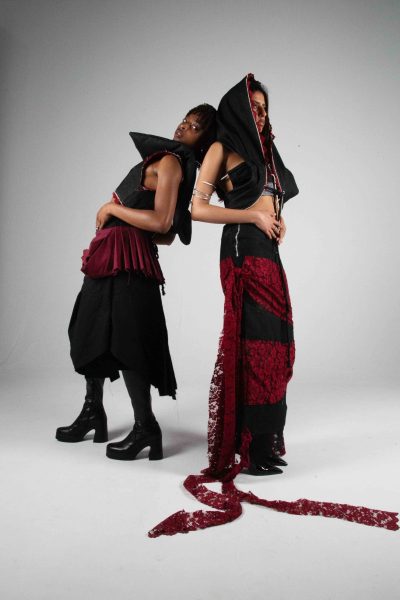
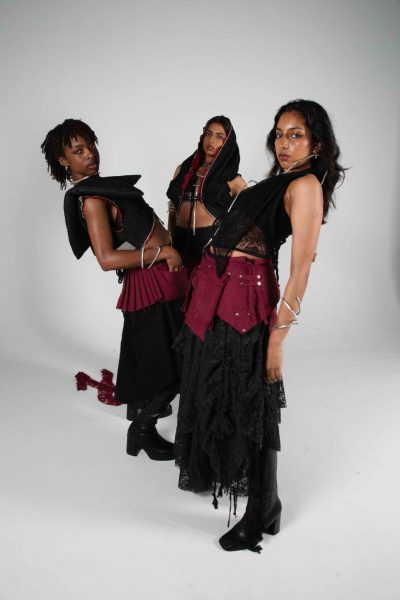
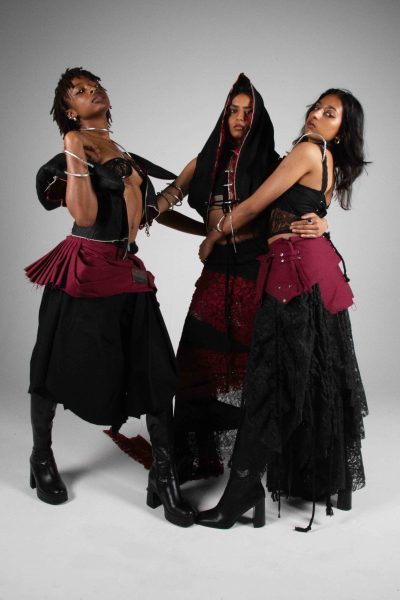
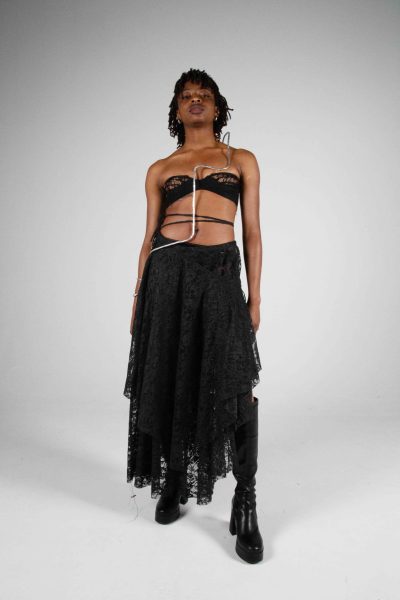
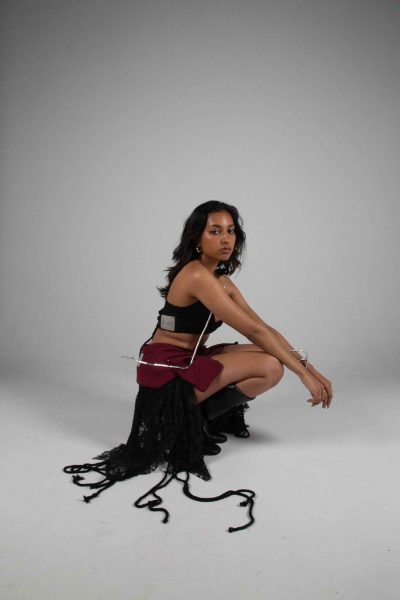
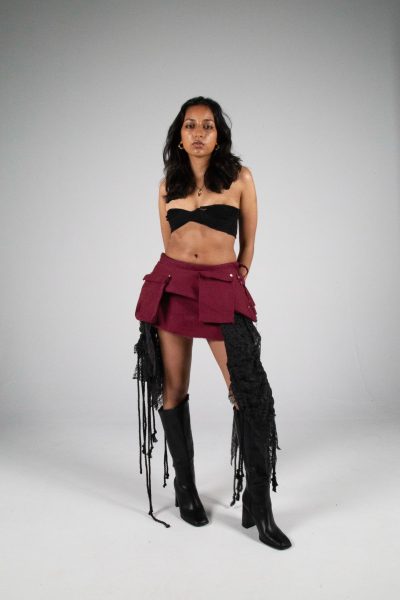
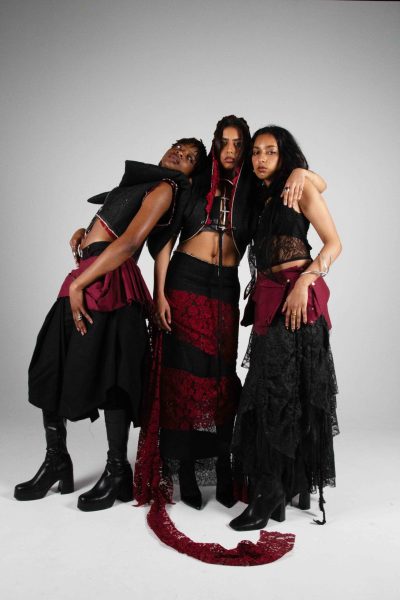
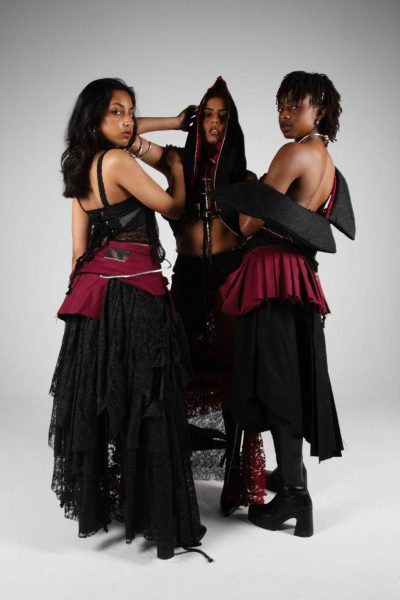
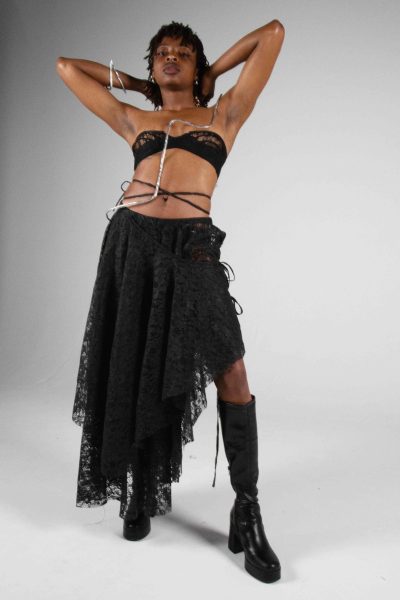
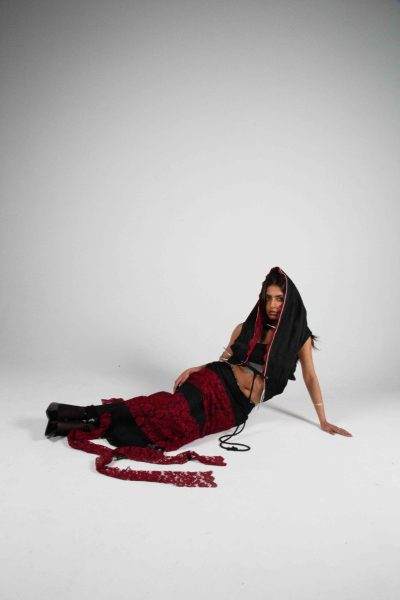
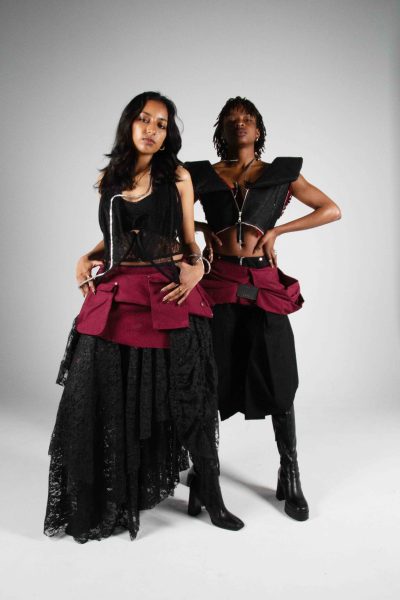
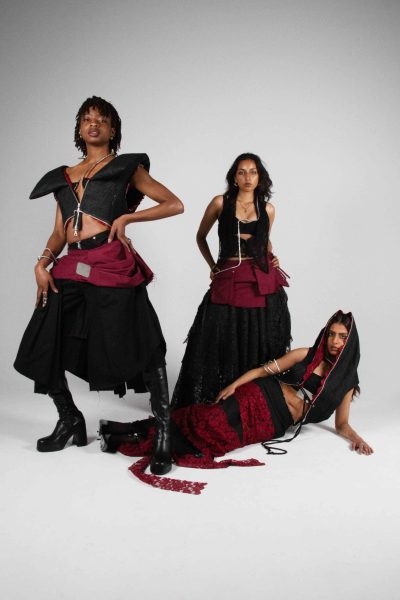
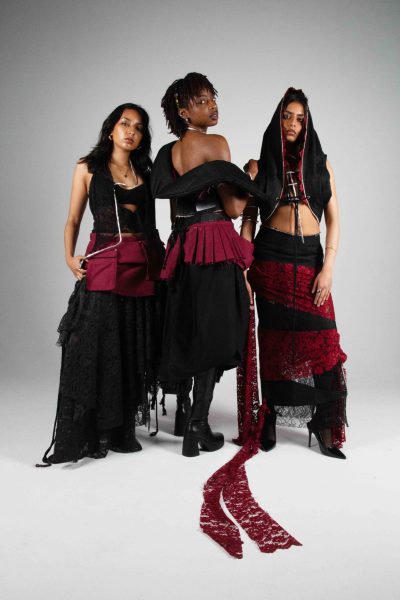
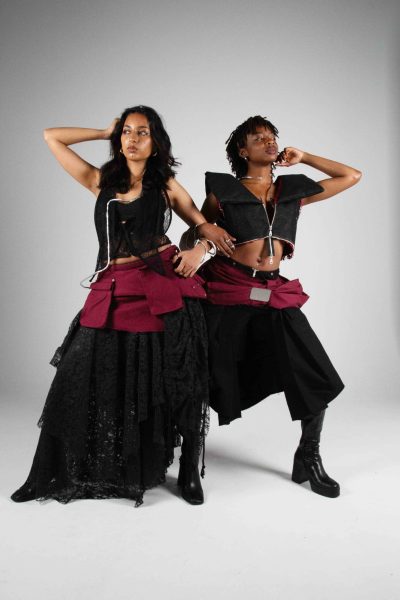
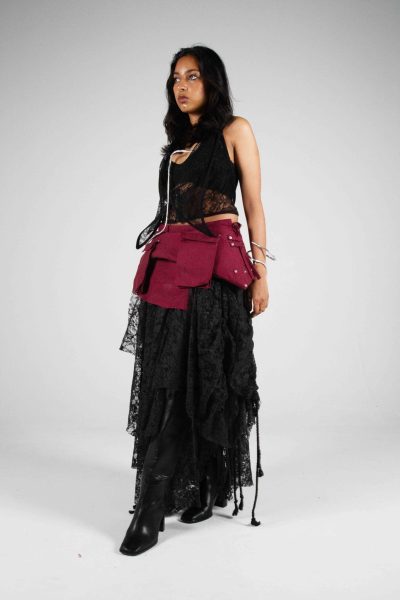
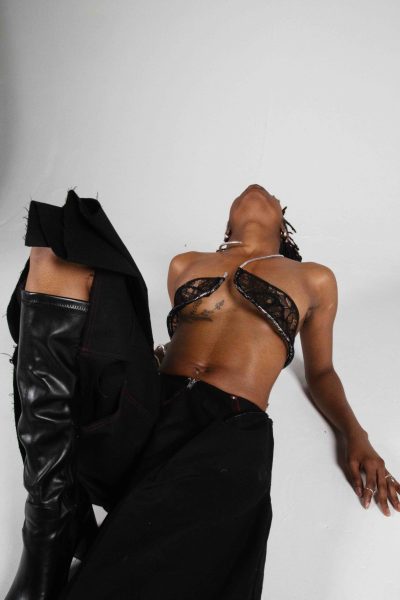
Concept
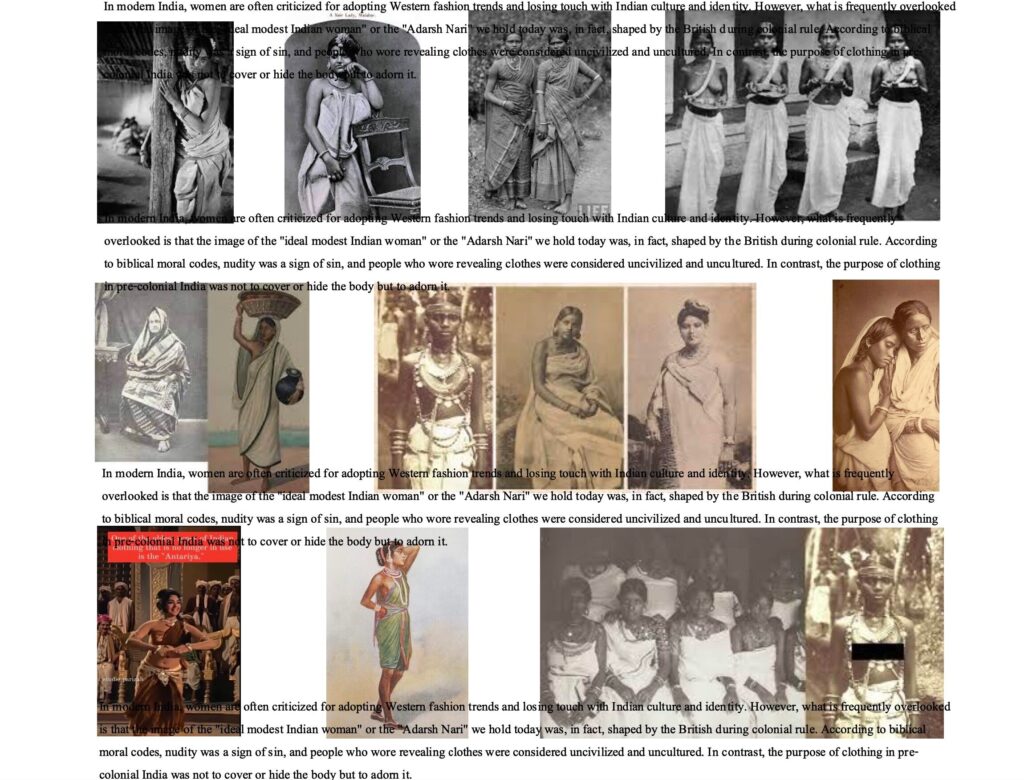
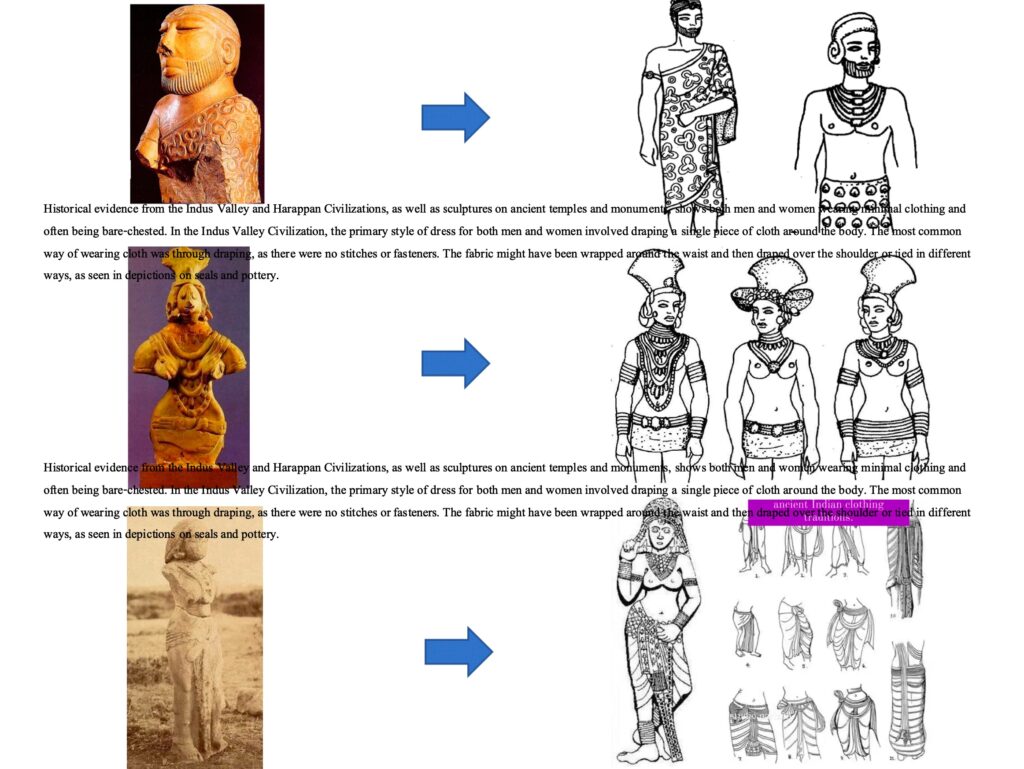
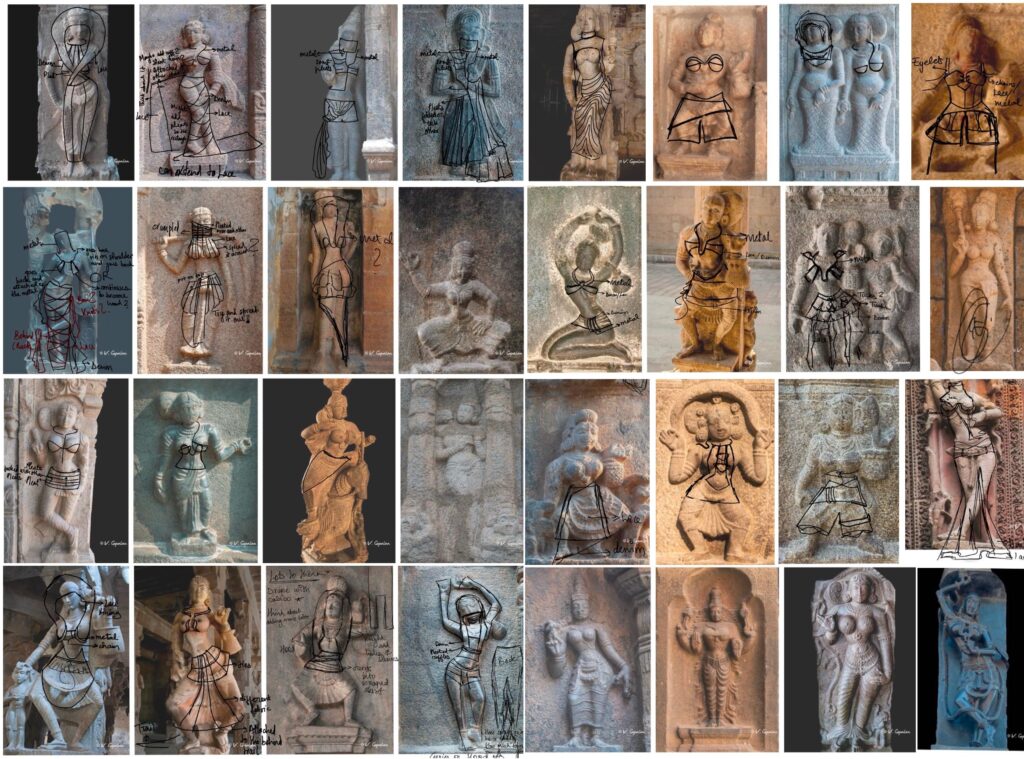
Historical evidence from the Indus Valley and Harappan Civilization, as well as sculptures on ancient temples and monuments, shows both men and women wearing minimal clothing and often being bare-chested or covered in jewellery. Proving clothing was more about fun and functionality and making yourself feel beautiful.
DESIGNER RESEARCH AND CUSTOMER AESTHETIC
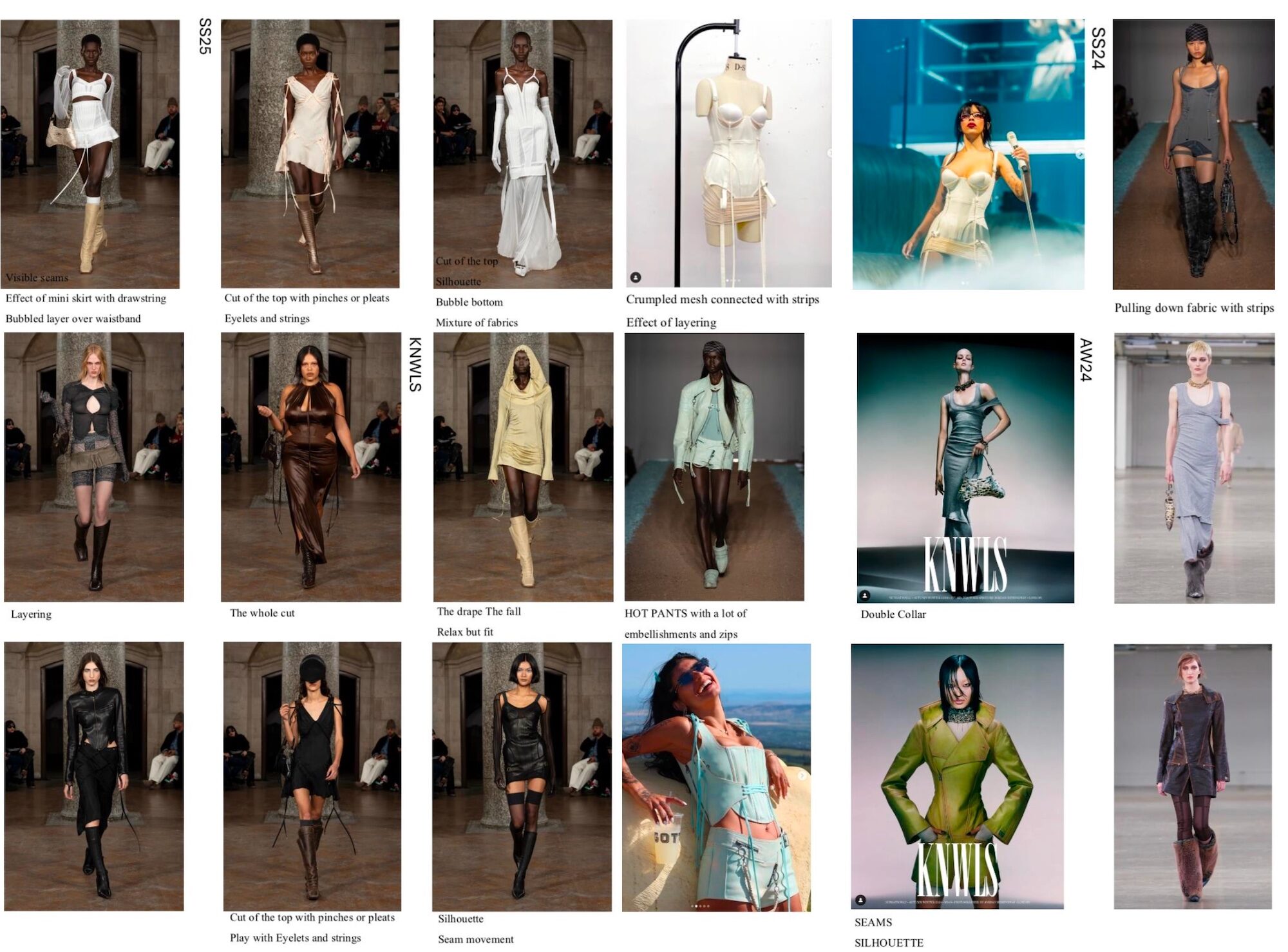
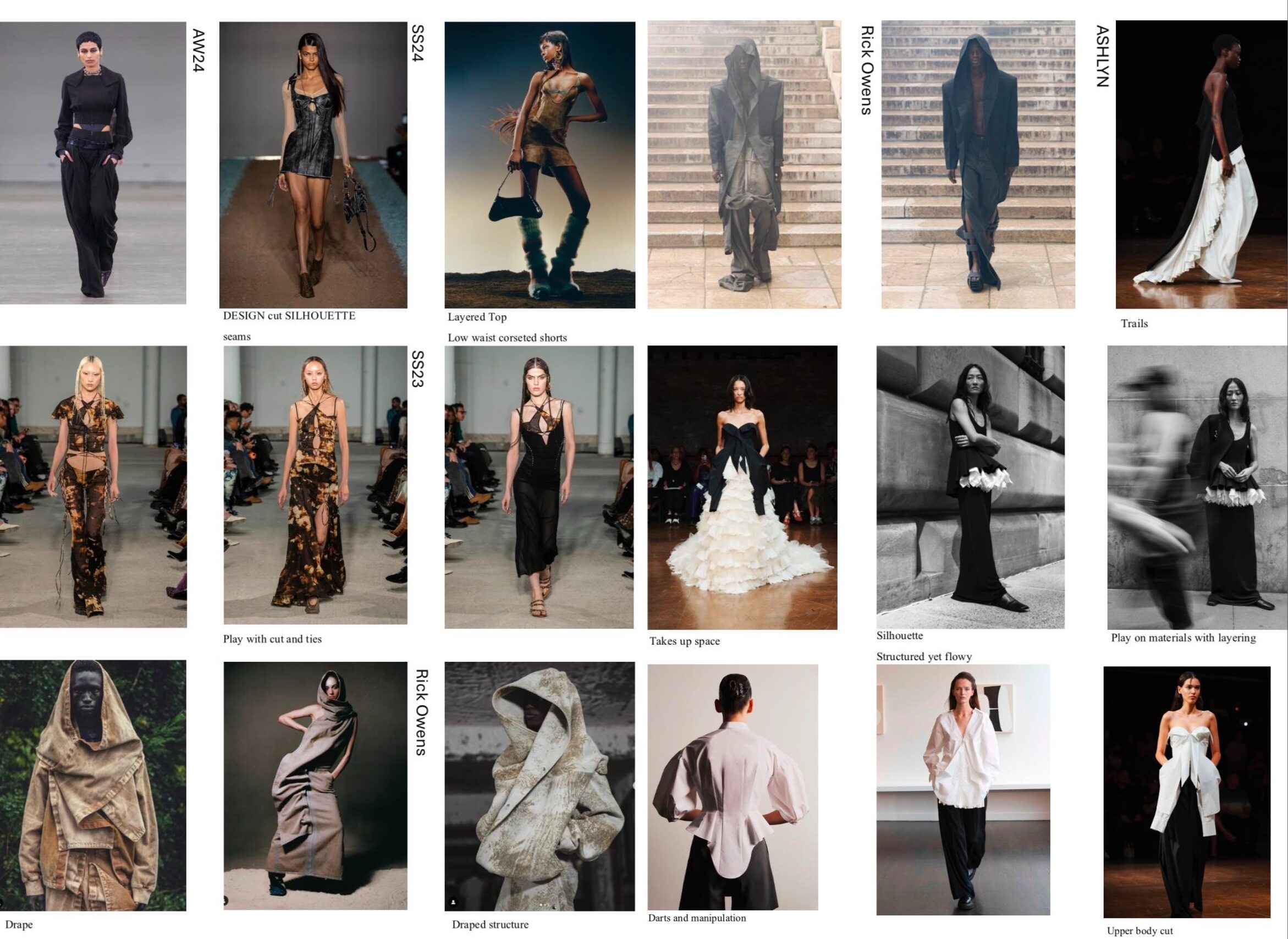
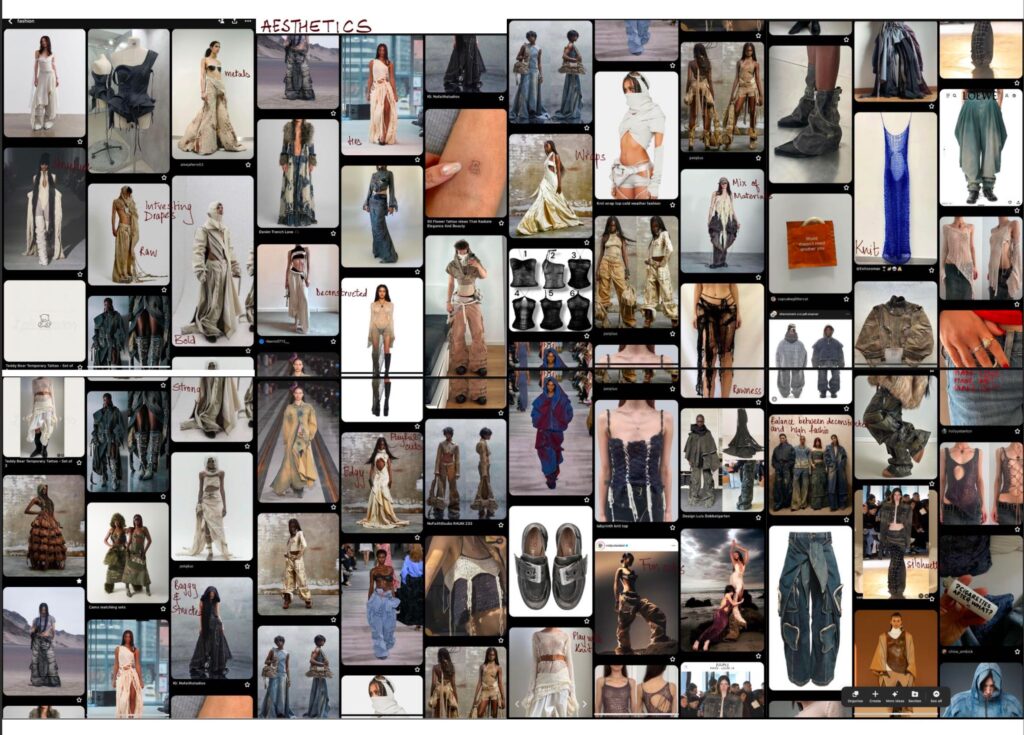
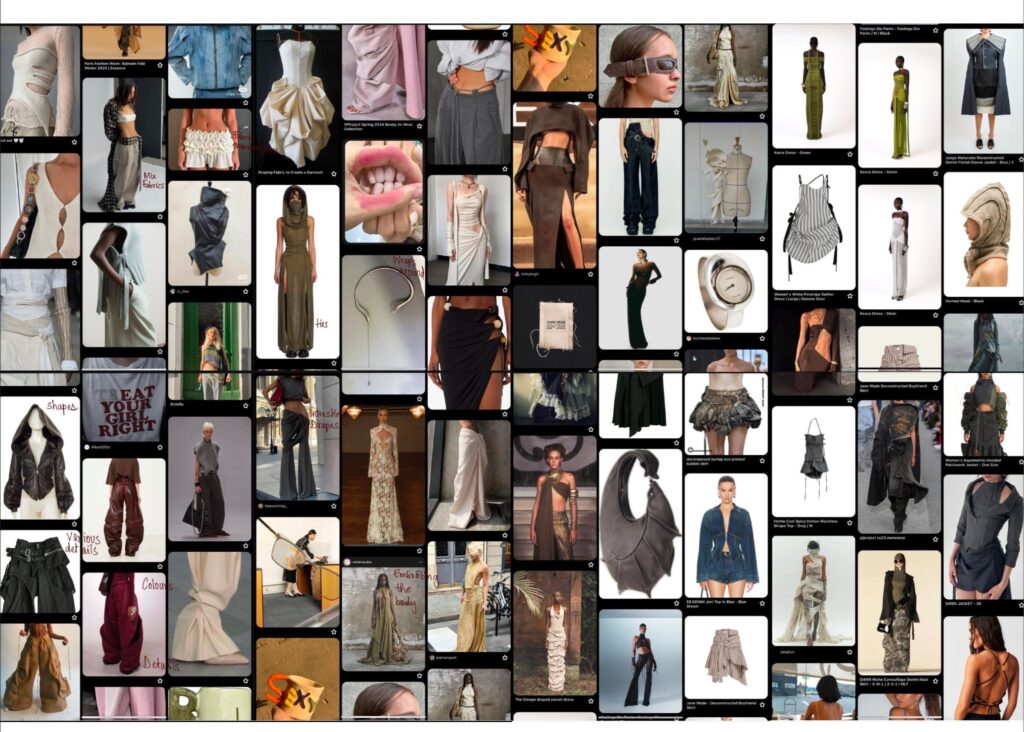
MOOD BOARD
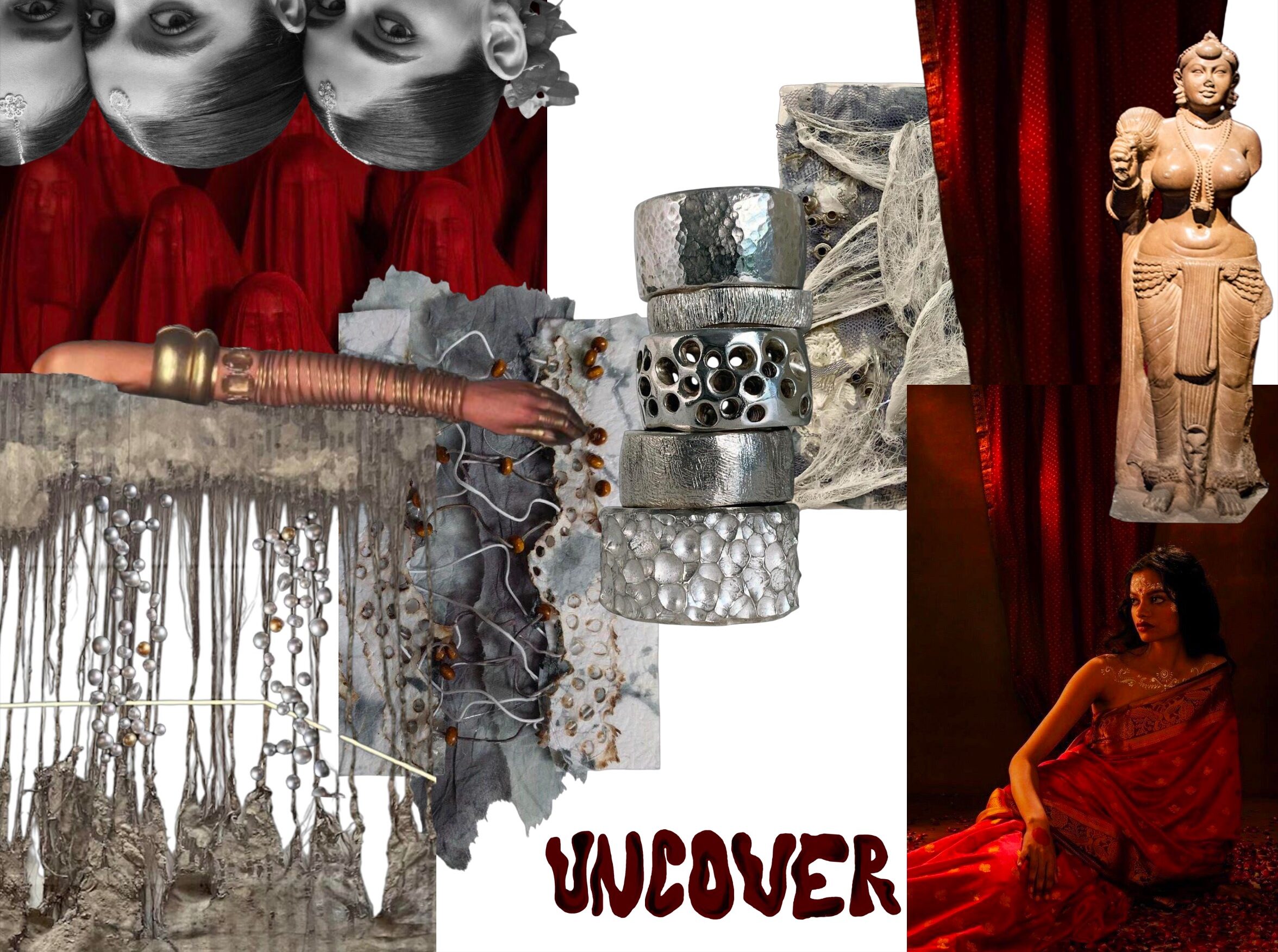
DEVELOPMENT
METAL JEWELLERY - if u have a look at the carvings people are covered with jewellery. I have drawn over them and produced more contemporary designs.
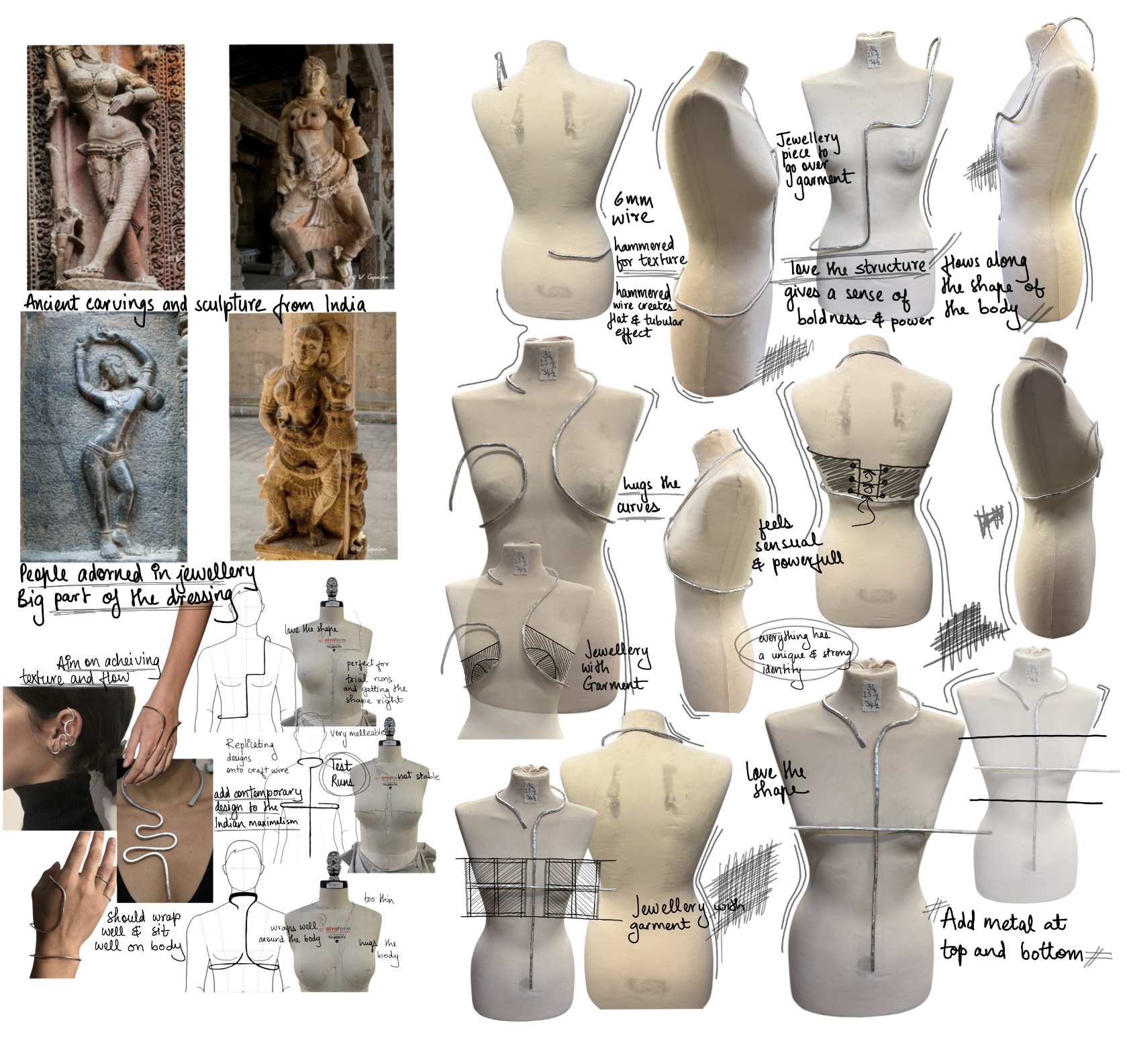
INITIAL DRAPING - inspired by the Indus Valley Civilization, where primary style of dress for both men and women involved draping a single piece of cloth around the body.
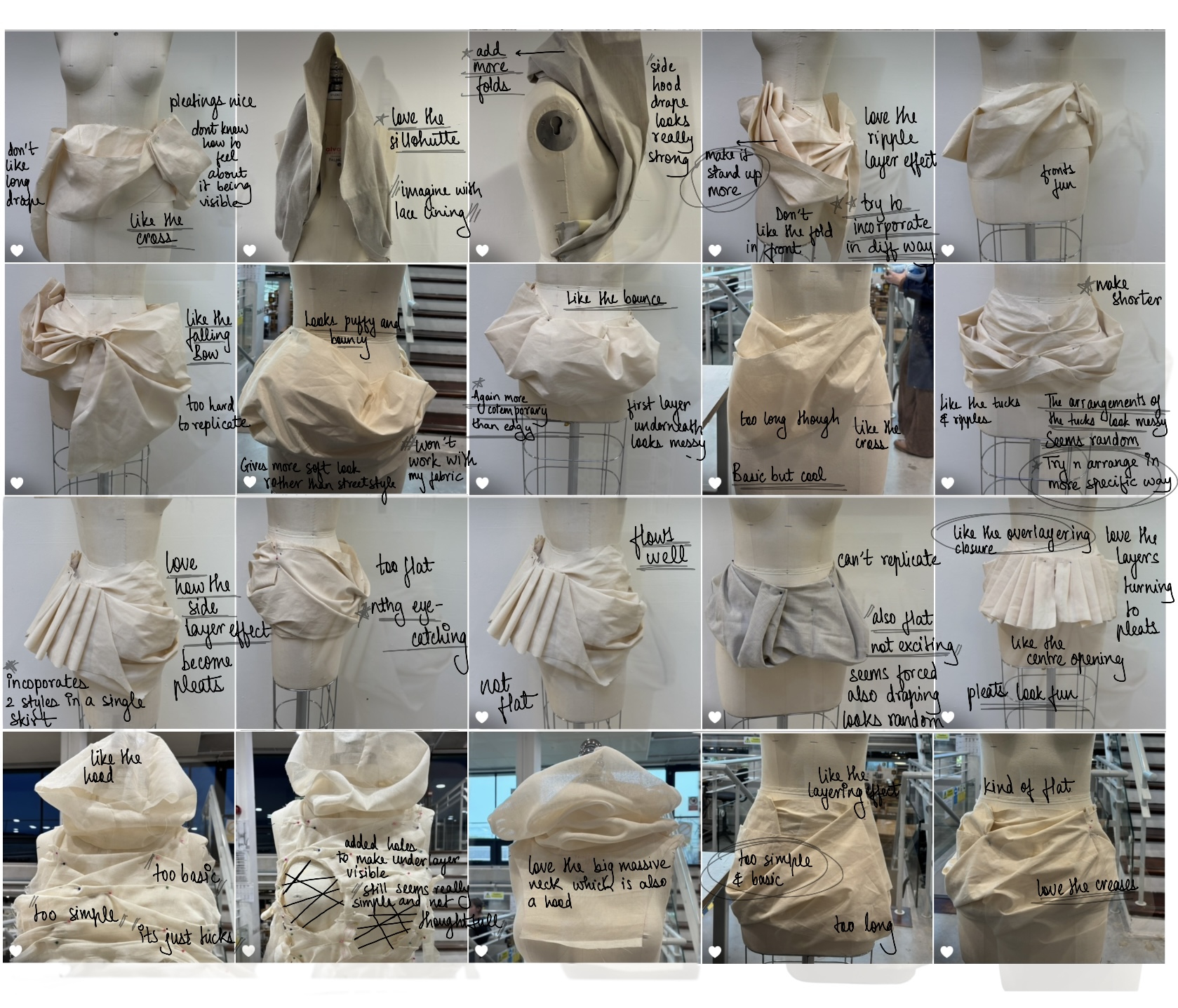
BRALETTES
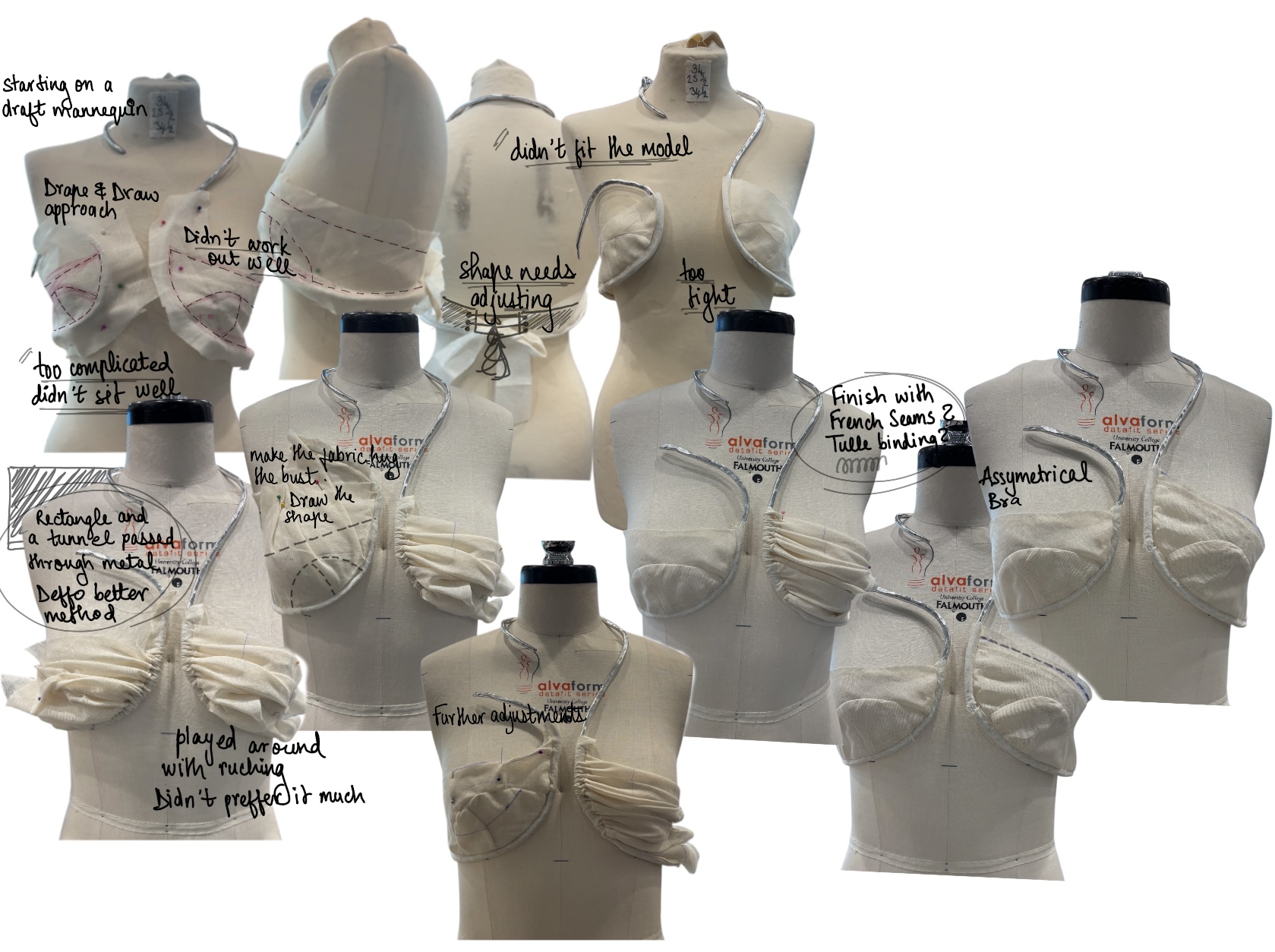
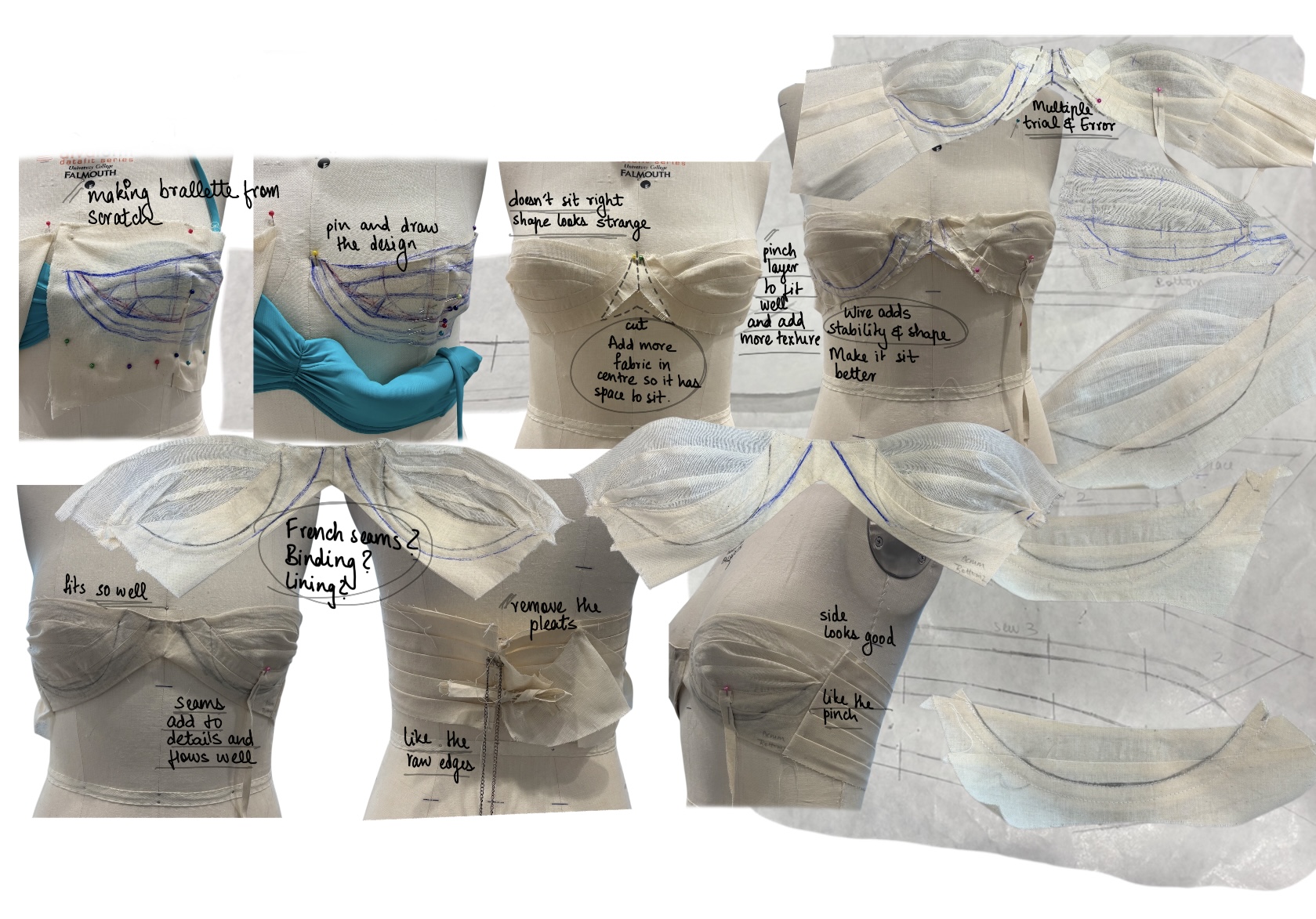
FURTHER DRAPING
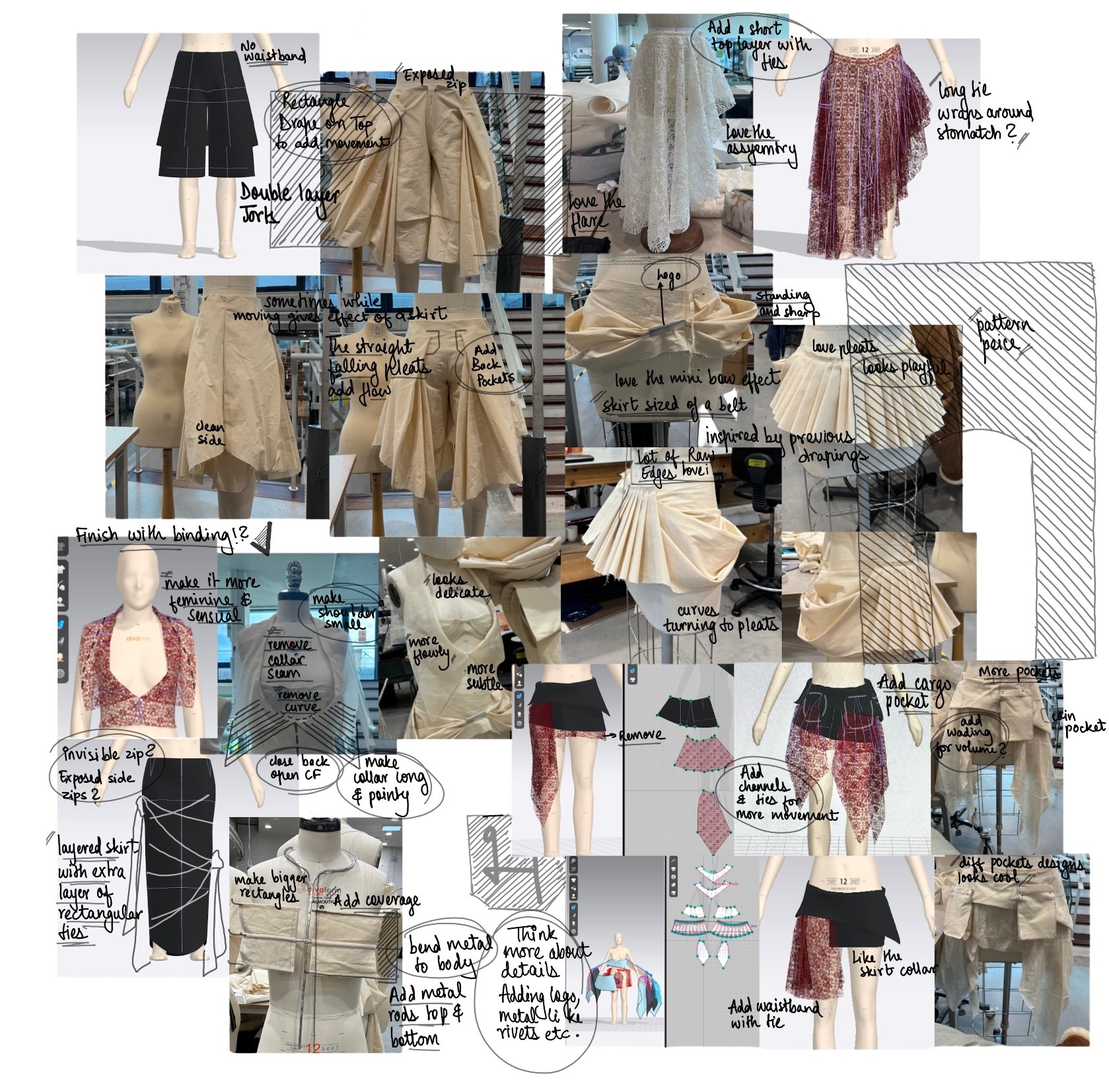
TRIALS AND TOILES
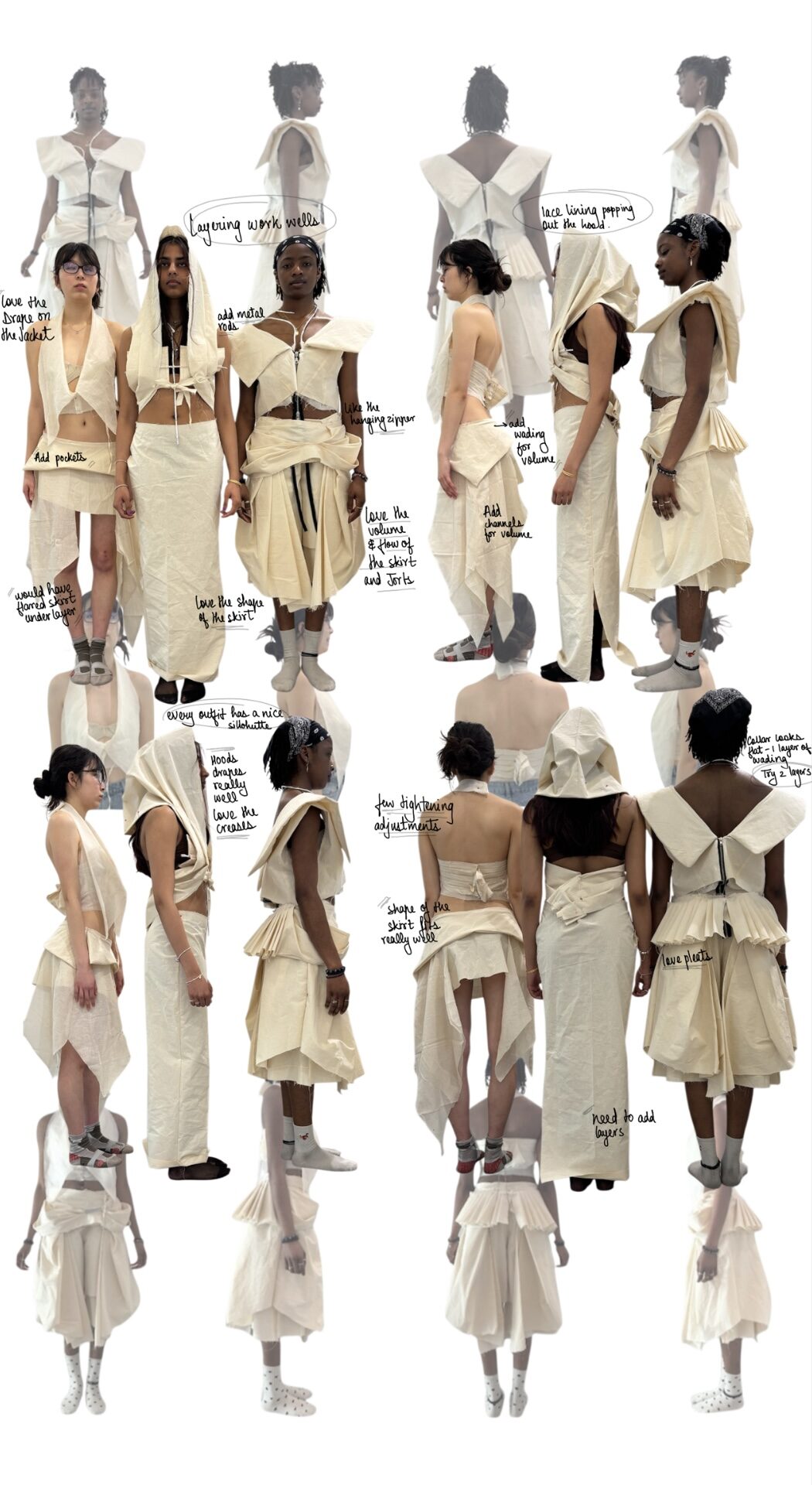
FABRIC, DYEING AND LABELS
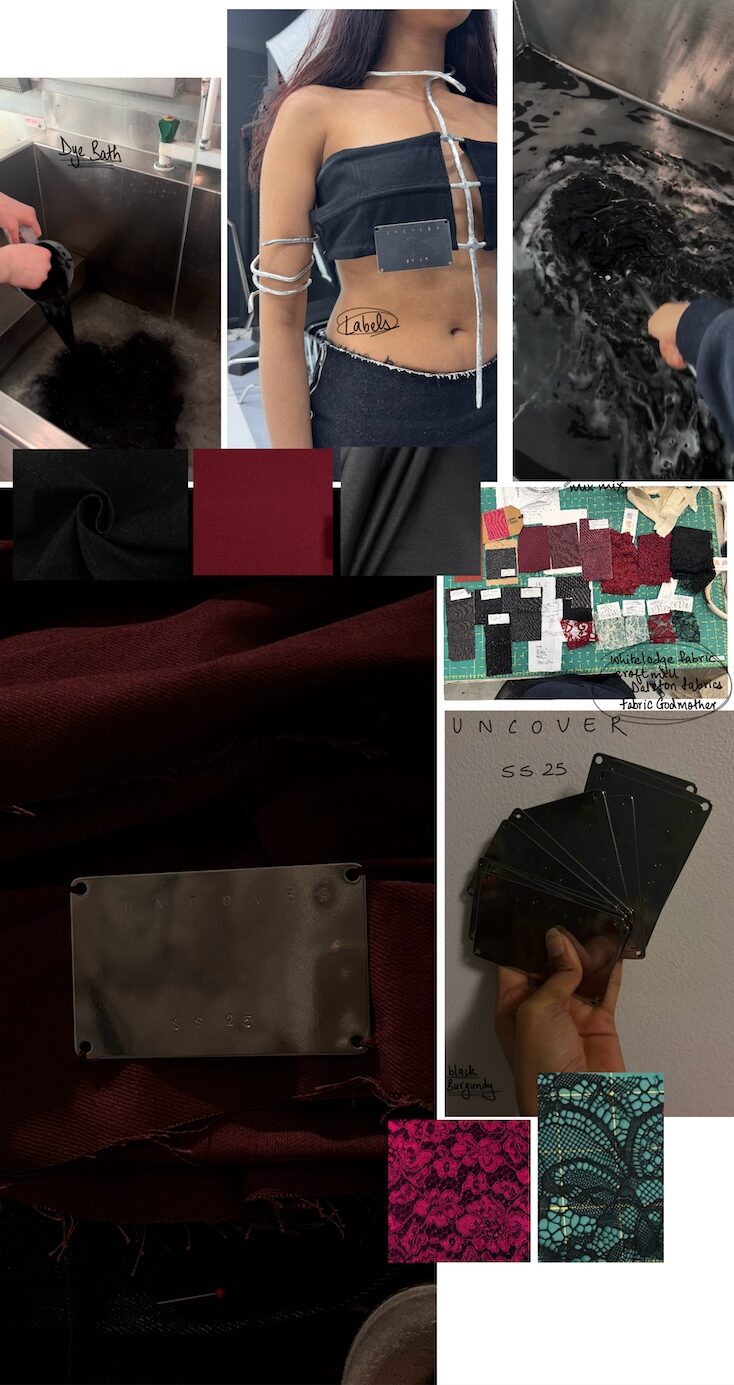
FURTHER DEVELOPMENT
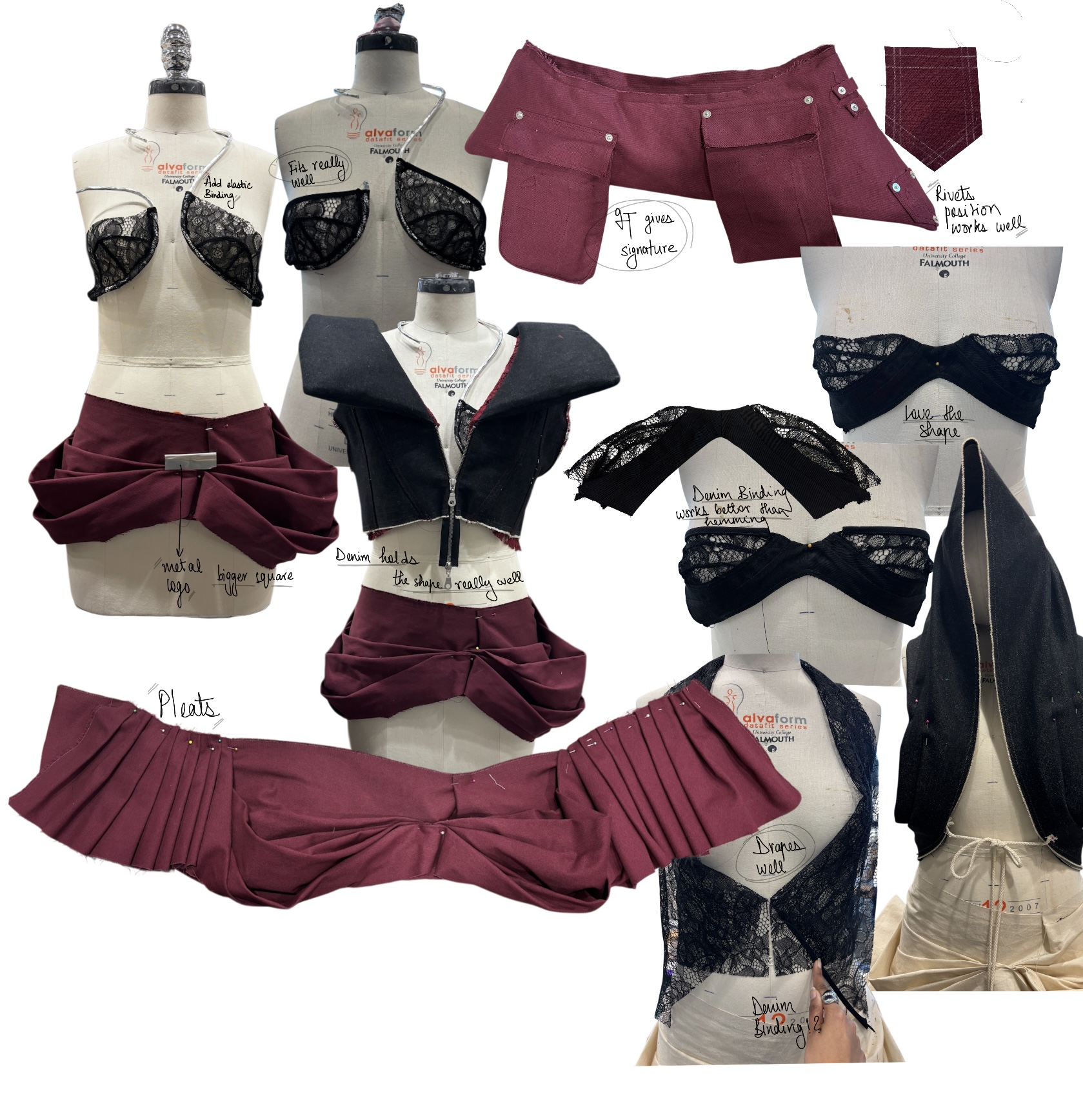
CAD RANGE PLAN
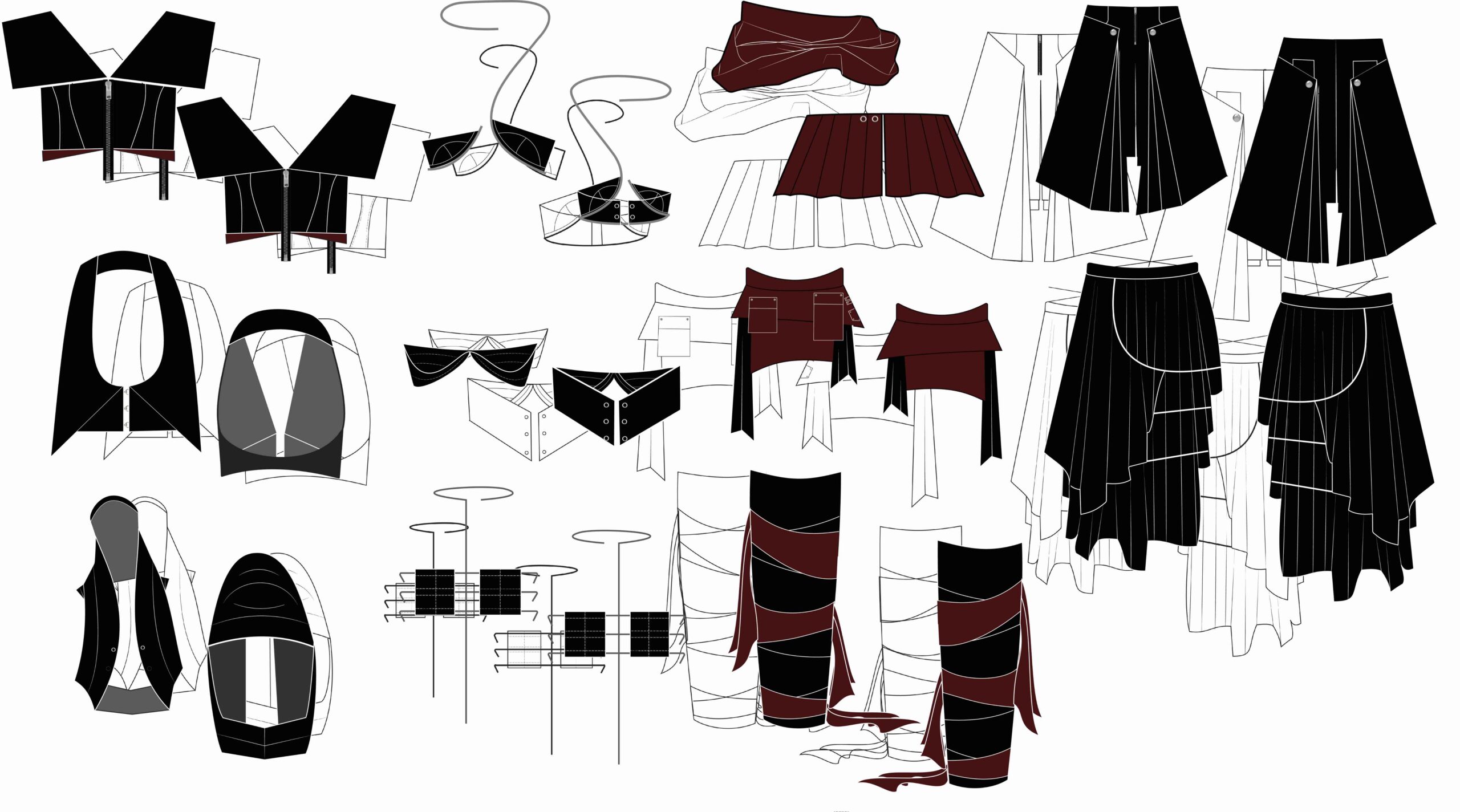
CIRCULARITY/UNSDG
Analysis: The State of Fashion 2025 (BoF x McKinsey)
Circularity & Regulation: Brands are increasingly adopting circular design principles, influenced by upcoming EU regulations mandating digital product passports (DPPs) for transparency in supply chains.
Consumer Behaviour: There is a notable shift towards conscious consumption, with consumers favouring brands that prioritise sustainability and ethical practices.
Technology Integration: The use of 3D design tools like CLO 3D is becoming standard, aiding in reducing waste and streamlining the design process.
UNSDG 12: Responsible Consumption and Production
Relevant Targets & Indicators:
Target 12.5: Substantially reduce waste generation through prevention, reduction, recycling, and reuse.
Target 12.6: Encourage companies to adopt sustainable practices and integrate sustainability information into their reporting cycle.
Target 12.8: Ensure that people everywhere have the relevant information and awareness for sustainable development and lifestyles in harmony with nature.
Positive Developments:
UK’s Circular Textile Initiatives: The UK is investing in circular textile infrastructure, including the establishment of Project Reclaim, aiming to process significant volumes of textile waste.
Phoebe English’s Sustainable Practices: Designer Phoebe English utilizes surplus fabrics and natural dyes, creating biodegradable garments and promoting circular fashion.
Innovative Sustainable Launches: Brands like Chelsea Peers and Stripe + Stare are introducing eco-friendly products, merging style with sustainability.
Challenges:
Despite efforts, the global economy remains only 8.6% circular, highlighting the need for accelerated action in sustainable consumption and production.
Influence on my Work:
The use of CLO 3D aligns with industry trends, enhancing efficiency and sustainability.
Emphasising storytelling, cultural resonance and promoting sustainability through our website and garments meets the growing consumer demand for meaningful and ethical fashion. It also creates awareness and education about sustainable practice.
My commitment to using 100% recyclable materials like cotton and polyester supports waste reduction and recyclability. My pattern-making often begins with a single square or rectangle minimising offcuts and promoting zero-waste design.
Designers & Brands Championing Circular Fashion
MUD Jeans: A Dutch brand offering a “Lease A Jeans” program, promoting recycling and reducing textile waste.
Troubadour Goods: This London-based company designs bags using 100% recycled materials and has launched the “Orbis Circular Collection.”
Eileen Fisher: Known for its commitment to circular design, Eileen Fisher runs a take-back program, and remakes used garments into new collections under its Renew initiative.
My Circular Practice
By using 100% polyester or 100% cotton fabrics, each garment can be easily recycled at the end of its life, without the complications of blended fibers.
Structural elements like malleable aluminium wire are also fully recyclable or reusable in other contexts.
Labels are crafted from stainless steel again highly recyclable.
Beyond recycling, each garment is made from high-quality fabrics designed to last making them ideal for resale.
Garments can also be sent back to us to be repurposed or responsibly recycled, ensuring nothing goes to waste.
As a brand, I offer a loan system for selected pieces, allowing them to be used in performances, exhibitions, or editorial shoots, supporting reusability within a circular model.

